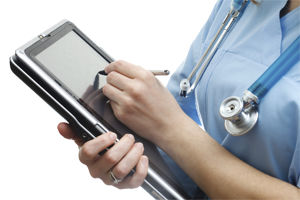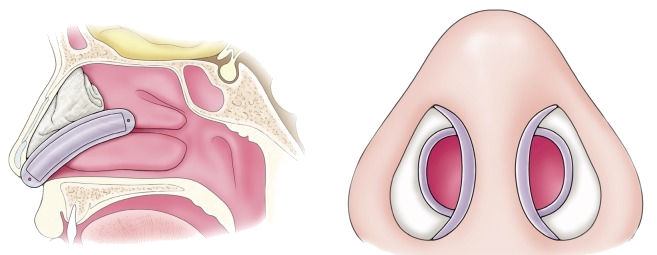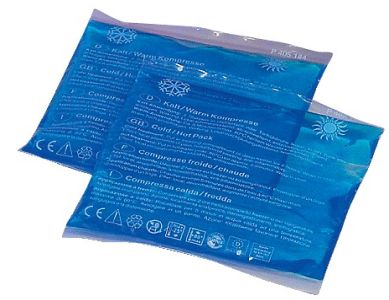

Your doctor in Korea will offer specific guidance on your recovery period during your post-operative appointments. These appointments will cover post-operative care, restriction of activities, use of makeup if needed, and when you can resume normal exercise. Follow all instructions, including information about bandages, splints, taking an antibiotic (if prescribed), and the level of activity that is safe. Your doctor will let you know the signs of problems to watch for, such as signs of infection. Recovery time will vary by patient and the kind of rhinoplasty you have undergone, whether it is a closed rhinoplasty, or an open rhinoplasty.
Your doctor may adjust these instructions based on your individual situation, in which case, please follow your direct instructions from your doctor.
Discomfort
Advancements in anaesthesia over recent years has meant more comfort for patients – less pain with minimal post operative sedation and nausea and a quick recovery to “feeling normal.” Naturally you may feel “woozy” as the anaesthetic wears off. You may feel some soreness, swelling or discomfort, but this is quite natural. You may also feel tired after surgery, this is also normal and will last only a short while.
Splint & Nasal Pack

Your doctor may place a plastic or metal splint on your nose. He may also place nasal packs inside your nostrils to stabilize your septum, which is the part of your nose between your nostrils. Nasal packing is the insertion of gauze and/or cotton packs into the nasal chamber after surgery. These are used to control bleeding, but are rarely needed. They are generally used if the surgery includes the septum. While patients will find this to be uncomfortable, the packing is for their benefit and is only used during the initial recovery period. The splints and nasal packs will help support and protect the newly shaped structures and help your nose retain its new shape while it heals.
Leaving the Hospital
Once the rhinoplasty is completed, you’ll be monitored in a recovery room for at least a few hours after surgery. Other than feeling drowsy, most patients feel pretty well after surgery and can usually leave the surgery center to go home a couple of hours later. If everything is okay, you’ll leave later that day. You’ll need someone to drive you because the anesthesia will still affect you, or we can arrange a taxi ride for you back to your hotel. Memory lapses, impaired judgment, and slow reaction time are common effects of the medications used for surgery. If possible, have a friend or relative stay with you the first night. If it’s a complicated procedure, you might have to stay in the hospital for a day or two.
Follow-up Appointments
Follow-up care is important after rhinoplasty. Be sure to keep your appointments and follow your doctor’s instructions. You will be required to return for post-operative visits to check your wounds, remove any sutures or splints, and check for any other post-operative problems.
Swelling and Discomfort
Each patient experiences healing differently, but generally, for the first few days the face is puffy and the area around the eyes and nose is swollen. How long the brusing lasts varies from patient to patient as each individual will recover at his or her own pace. However, it is common to have bruising for the first 1-2 weeks. The bruising and swelling around your eyes and nose will increase at first and start to dissipate after reaching a peak about two or three days after surgery and typically starts to go down after that. Improved appearance and/or function will be noticeable within days and will continue to improve as swelling goes down. Most of the swelling and bruising is gone about seven to ten days later but minor bruising and swelling can last up to even a year later. It is important to avoid direct sunlight while you still have bruising as it can lengthen the recovery time significantly.
Other common side effects are occasional headaches and sometimes nausea, nasal stuffiness, slight nose bleeds, and numbness of the upper teeth, which tend to resolve themselves over the first few weeks after surgery. You won't be able to blow your nose, but decongestants (pre-approved by your surgeon) can help.
As with all surgical procedures, you will experience some pain and discomfort following your procedure. Pain medication will be prescribed to reduce discomfort. Once you arrive home or wherever it is you plan on staying to recover, you will begin using the pain medicine prescribed to you.

A cold compress can also be used to minimize swelling and pain. You may apply an ice pack to your lower forehead and upper nose area for the first 24 to 36 hours following surgery. Applying ice to your nose for 15-20 minutes every hour for the first 24 hours will help reduce swelling and pain. Be sure to wrap a towel around your ice pack and not apply it directly to your skin. Applying ice after this time frame is not necessary, and in fact may slow down the resolution of your facial swelling.
It is important to stay hydrated by drinking plenty of water and to also eat something (even if it’s something small, such as crackers or toast) each time you take your pain medication. Doing so significantly reduces nausea related to the use of the narcotic pain medication.
For the first week after surgery, you will need to keep your head in an elevated position at all times, even when sleeping, in order to reduce bleeding and swelling and to reduce pain. You may do so by using a few pillows or a wedge to support your head and neck at about 45 degrees of elevation. You will need to sleep on your back. If you have access to a recliner, some patients find it very comfortable to rest and stay somewhat elevated in one. Staying elevated will help you have less swelling of the face and bruising around your eyes, which usually peaks after two or three days.
Splint and Nasal Pack
For seven to ten days, splints and gauze packing may support the nose as it begins to heal. The splint helps the bones and cartilage maintain their new shape. It is important to keep the splint on your nose dry at all times and to avoid any manipulation. A splint that gets wet will fall off, adversely affecting the results of the operation. Avoid hot, steamy showers or baths as this the steam will also loosen the nose splint prematurely. If your nose is swollen or packed with cotton, you might feel congested. People are usually required to leave splints and dressings in place for 7 to 10 days after surgery, and the surgical packing will be removed after 4 to 7 days, after which they will be removed painlessly by your doctor. Paper tape may be placed across the nose for a further week.
You may not shower until your nasal splints are removed. This can be anywhere from 6-10 days after surgery. You are welcome to take a sponge bath; however, you must avoid getting your face or splints wet. This includes being careful when washing your face. You will also need to wait until after the splint is removed to wash your hair as you cannot shower, unless you are able to have someone wash it for you in a sink without getting your face wet.
Once the splint is removed from your nose, approximately 6-10 days following surgery, you may begin to cover up any residual bruising with makeup. At this point it is safe to begin wearing any other makeup, including foundation and powder.
You might have absorbable stitches, meaning they’ll dissolve and won’t require removal. If the stitches aren’t absorbable, you’ll need to see your doctor again a week after surgery to get the stitches taken out.
For a few days after your surgery, you might experience drainage and bleeding. A drip pad, which is a piece of gauze taped below your nose, can absorb blood and mucus. You will have a drip pad taped under your nostrils and this is the only part of the dressing you may change.Your doctor will tell you how often to change your drip pad.
Medication
You should avoid painkillers containing ibuprofen or aspirin for two weeks after your surgery. These medications slow down the blood-clotting process and can make you bleed more. Let your surgeon know what medications and supplements you’re taking, so they can advise you about whether or not to continue them.
You will need to take any antibiotics prescribed to you to prevent infection.
Alcohol
Avoid alcohol for two weeks following surgery, and make sure you drink plenty of water. Alcohol can cause swelling in the nose. It make healing take longer, increase the chance of scarring, cause itching and irritation at the surgical site, increases the risk for excessive bleeding, reduces pain tolerance, and can have dangerous interactions with prescribed medications.
Smoking
Smokers have more difficulty healing from rhinoplasty, as cigarettes slow the recovery process. Nicotine constricts your blood vessels, resulting in less oxygen and blood getting to healing tissues. Quitting smoking before and after surgery can help the healing process.
It is important you do not blow your nose and you must sneeze with your mouth open to reduce pressure in the nose.
Protecting the Nose
It is very important your protect your nose from any trauma for several weeks after your surgery. You will be advised to avoid any activities that may put your nose in harm's way, particularly travel and sports, and to limit all strenuous physical activities for a few weeks.
You will not be able to wear glasses.
Returning to Work or School
Ideally, you will want to take at least 7 to 14 days off of work or school after surgery and can return to any non-strenuous job after the splint removal. On average, patients are socially presentable 2 weeks after rhinoplasty surgery. Any residual bruising can usually be covered with concealer. You will be instructed to continue avoiding contact sports.
Contact your surgeon if:
• Your splint comes off
• You feel blood draining down your throat
• You have a fever over 101 deg F
• Your nose is red or draining pus
• Your upper teeth, gums, or nose is numb
• You have a change in vision
• You have severe pain
Seek care immediately or call emergency if:
• You have trouble breathing
• Clear, thin fluid is draining from your nose when you bend forward
Swelling and Discomfort
Rhinoplasty can affect the area around your eyes, and you might have temporary numbness, swelling, or discoloration around your eyelids for a few weeks. In rare cases, this can last for six months, and slight swelling could persist even longer. You can apply cold compresses or ice packs to decrease discoloration and swelling.
Protecting the Nose
You will need to continue avoid wearing glasses or sunglasses.
You will still need to sleep on your back.
Be especially careful about sun exposure. Too much could permanently discolor the skin around your nose.

Your doctor may tell you to avoid the following for a few weeks after your surgery:
• Running and other strenuous physical activities
• Swimming
• Blowing your nose
• Excessive chewing
• Laughing, smiling, or other facial expressions that require lots of movement
• Pulling clothing over your head
• Resting eyeglasses on your nose
• Vigorous tooth brushing
When you can resume exercise will be determined by your doctor after your surgery and is based on each individual patient. Most patients can resume more strenuous activity in about four-to-six weeks. It is important not to raise your heart rate from aerobic activity after having surgery as this can prolong your recovery and slow the dissipation of swelling in and around your nose.
Swelling and Discomfort
While initial swelling subsides within a few weeks, the nose will continue to improve for at least one year after nose reshaping surgery. So, while there is a nice result one week after surgery, the final result will not be obvious as soon as the cast is removed. The nose will continue to refine and reshape during the months after surgery, and may take up to a year for your new nasal contour to fully refine to a more permanent outcome.
While much of the swelling will be gone, some swelling will persist for a few months, or even up to a year. Swelling may come and go and worsen in the morning during the first year following your rhinoplasty surgery.
Protecting the Nose
You will need to avoid sunglasses & reading glasses for 8 weeks following surgery. You are able to wear contact lenses and will be able to put them in as soon as you feel comfortable enough following surgery. Wearing glasses before it is recommended may affect the final contour of your nose. Please do not drive during this period if you are unable to wear your prescription glasses.

If you are unhappy with the appearance of your nose, or suffer from medical issues with your nose, we invite you to contact our nose surgery service today. You can find the answers to the most frequently asked questions here. Your doctors in Korea will provide a comprehensive medical history and Rhinoplasty analysis that will allow them to provide each patient with an accurate diagnosis so that a patient-specific treatment plan can be put into action. Contact us now.

Please send us your email address, and one of our representatives will personally contact you as soon as possible.
Your email address will never be sold or spammed.